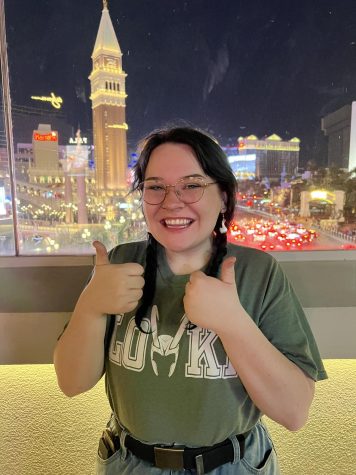Head-to-Head: defending the group project
Opinion Editor, Eric Fogle, defends the concept of the group project
Sep 30, 2022
This column is part of a “Head-to-Head” series. Read the counterargument by Laken Kincaid.
This week, both of my Political Science classes were assigned semester-long group projects. When filling my friends and bosses in on the trajectory of my semester, I noticed a compassionate wince almost every time I mentioned the group projects. I think it was meant to signal sympathy, to express an apology, or to commiserate in the dread group projects are expected to create.
With each grimace, I felt compelled to ask the person across from me what makes group projects such a pain. To a large extent, it’s fashionable to hate group projects, but collaboration complicates our ability to act on that disdain. In the end, we all need to pitch in, and we do, or else we get the bad grade that we pretend isn’t our biggest fear. This column is a defense of the group project. My stance: they’re not that bad.
Group projects can go one of two ways. In type one, a Leader freely decides to commandeer the project and complains that other group members aren’t pulling their weight. In the second type, responsibility is shared somewhat equally among group members. For my argument to proceed, I align myself with the second type. The first type certainly exists, though self-evaluations and individual components motivate students to evenly assume the burden.
Further, I believe the benefits of a well-executed group project outweigh the risks of a poorly-executed one. It’s unfair to dismiss the value of group projects by appealing to the occasions where they go wrong and treating that occasion as the rule.
Group projects do what individual projects do; they evaluate one’s ability to research a topic, to effectively synthesize the research into a paper, literature review, or lab report. Group projects ask students to demonstrate a nuanced understanding of the subject and occasionally display their understanding (and ability to publicly speak) in a presentation. But the rubrics of group projects have an invisible and unbelievably important component: they grade cooperation, one’s ability to act as a member of a team.
Teachers have a strong incentive to grade their students’ abilities to cooperate, especially considering the many mission and vision statements at John Carroll University. Encouraging social and intellectual engagement in the form of group projects surely helps students develop into “inspired, discerning leaders in service for and with others.” That quote is taken directly from the website.
Consider the first type of group project, wherein a Leader turns the group project into a largely individual one. The final paper he writes may be exceptional in isolation, and may show mastery of research and presentation. But if it’s submitted for a group project, that same paper may show an inability to compromise, to communicate or to delegate.
The second type, individuals acting as a single unit exemplify the value of collaboration and coordination. To sacrifice individual credit, to become members of a team greater than the sum of its parts is what the vision statement looks like in action.
Good grades and a handful of extracurriculars earn people into John Carroll and, if continued, will likely earn them jobs. However, if one can’t learn to contribute to a complex yet functional unit, I wonder about their post-graduate success. Any job setting that I can imagine looks a lot more like a group project than an individual one.
Employees, in the real world, assume a two-fold identity: the team member and the individual. Group projects build the skills that enable students to become effective team members. Often unnoticed and unmentioned, these are the skills needed to work with bosses and coworkers but also with significant others and one’s children. These fundamental human skills serve both the people we see every day and the people we see once and never again.














